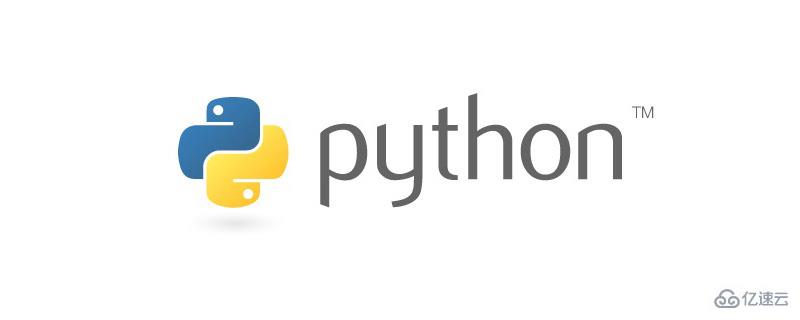这篇文章主要介绍“Python数据类型之numpy使用实例分析”的相关知识,小编通过实际案例向大家展示操作过程,操作方法简单快捷,实用性强,希望这篇“Python数据类型之numpy使用实例分析”文章能帮助大家解决问题。

| 类型名 | 类型表示符 |
|---|---|
| 布尔型 | bool |
| 有符号整数型 | int8 / int16 / int32 / int64 |
| 无符号整数型 | uint8 / uint16 / uint32 / uint64 |
| 浮点型 | float16 / float32 / float64 |
| 复数型 | complex64 / complex128 |
| 字符型 | str,每个字符用 32 位 Unicode 编码表示 |
import numpy as np
arr = np.array([1, 2, 3])
print(arr, arr.dtype)
arr = arr.astype('int64')
print(arr, arr.dtype)
arr = arr.astype('float32')
print(arr, arr.dtype)
arr = arr.astype('bool')
print(arr, arr.dtype)
arr = arr.astype('str')
print(arr, arr.dtype)如果希望 ndarray 中存储对象类型,numpy 建议使用元组存储对象的属性字段值,然后把元组添加到 ndarray 中,ndarray 提供了语法方便处理这些数据。
import numpy as np
data = [
('zs', [99, 98, 90], 17),
('ls', [95, 95, 92], 16),
('ww', [97, 92, 91], 18)
]
# 姓名 2 个字符
# 3 个 int32 类型的成绩
# 1 个 int32 类型的年龄
arr = np.array(data, dtype='2str, 3int32, int32')
print(arr)
print(arr.dtype)
# 可以通过索引访问
print(arr[0], arr[0][2])当数据量大时,采用上述方法不便于数据的访问。
ndarray 提供可以采用字典或列表的形式定义数组元素的数据类型和列的别名。访问数据时,可以通过下标索引访问,也可以通过列名进行数据访问。
import numpy as np
data = [
('zs', [99, 98, 90], 17),
('ls', [95, 95, 92], 16),
('ww', [97, 92, 91], 18)]# 采用字典定义列名和元素的数据类型arr = np.array(data, dtype={
# 设置每列的别名
'names': ['name', 'scores', 'age'],
# 设置每列数据元素的数据类型
'formats': ['2str', '3int32', 'int32']})print(arr, arr[0]['age'])# 采用列表定义列名和元素的数据类型arr = np.array(data, dtype=[
# 第一列
('name', 'str', 2),
# 第二列
('scores', 'int32', 3),
# 第三列
('age', 'int32', 1)])print(arr, arr[1]['scores'])# 直接访问数组的一列print(arr['scores'])import numpy as np
dates = [
'2011',
'2011-02',
'2011-02-03',
'2011-04-01 10:10:10'
]
ndates = np.array(dates)
print(ndates, ndates.dtype)
# 数据类型为日期类型,采用 64 位二进制进行存储,D 表示日期精确到天
ndates = ndates.astype('datetime64[D]')
print(ndates, ndates.dtype)
# 日期运算
print(ndates[-1] - ndates[0])1.日期字符串支持不支持
2011/11/11,使用空格进行分隔日期也不支持2011 11 11,支持2011-11-11
2.日期与时间之间需要有空格进行分隔2011-04-01 10:10:10
3.时间的书写格式10:10:10
numpy 提供了类型字符码可以更加方便的处理数据类型。
| 类型 | 类型表示符 | 字符码 |
|---|---|---|
| 布尔型 | bool | ? |
| 有符号整数型 | int8 / int16 / int32 / int64 | i1 / i2 / i4 / i8 |
| 无符号整数型 | uint8 / uint16 / uint32 / uint64 | u1 / u2 / u4 / u8 |
| 浮点型 | float16 / float32 / float64 | f2 / f4 / f8 |
| 复数型 | complex64 / complex128 | c8 / c16 |
| 字符型 | str,每个字符用 32 位 Unicode 编码表示 | U |
| 日期 | datatime64 | M8[Y] / M8[M] / M8[D] / M8[h] / M8[m] / M8[s] |
import numpy as np
data = [
('zs', [99, 98, 90], 17),
('ls', [95, 95, 92], 16),
('ww', [97, 92, 91], 18)
]
# 采用字典定义列名和元素的数据类型
arr = np.array(data, dtype={
# 设置每列的别名
'names': ['name', 'scores', 'age'],
# 设置每列数据元素的数据类型
'formats': ['2U', '3i4', 'i4']
})
print(arr)
print(arr[1]['scores'])
print(arr['scores'])
print(arr.dtype)选取字段,使用 ndarray 存储数据。
import numpy as np
datas = [
(0, '4室1厅', 298.79, 2598, 86951),
(1, '3室2厅', 154.62, 1000, 64675),
(2, '3室2厅', 177.36, 1200, 67659),]arr = np.array(datas, dtype={
'names': ['index', 'housetype', 'square', 'totalPrice', 'unitPrice'],
'formats': ['u1', '4U', 'f4', 'i4', 'i4']})print(arr)print(arr.dtype)# 计算 totalPrice 的均值sum_totalPrice = sum(arr['totalPrice'])print(sum_totalPrice/3)
关于“Python数据类型之numpy使用实例分析”的内容就介绍到这里了,感谢大家的阅读。如果想了解更多行业相关的知识,可以关注亿速云行业资讯频道,小编每天都会为大家更新不同的知识点。
亿速云「云服务器」,即开即用、新一代英特尔至强铂金CPU、三副本存储NVMe SSD云盘,价格低至29元/月。点击查看>>
免责声明:本站发布的内容(图片、视频和文字)以原创、转载和分享为主,文章观点不代表本网站立场,如果涉及侵权请联系站长邮箱:is@yisu.com进行举报,并提供相关证据,一经查实,将立刻删除涉嫌侵权内容。